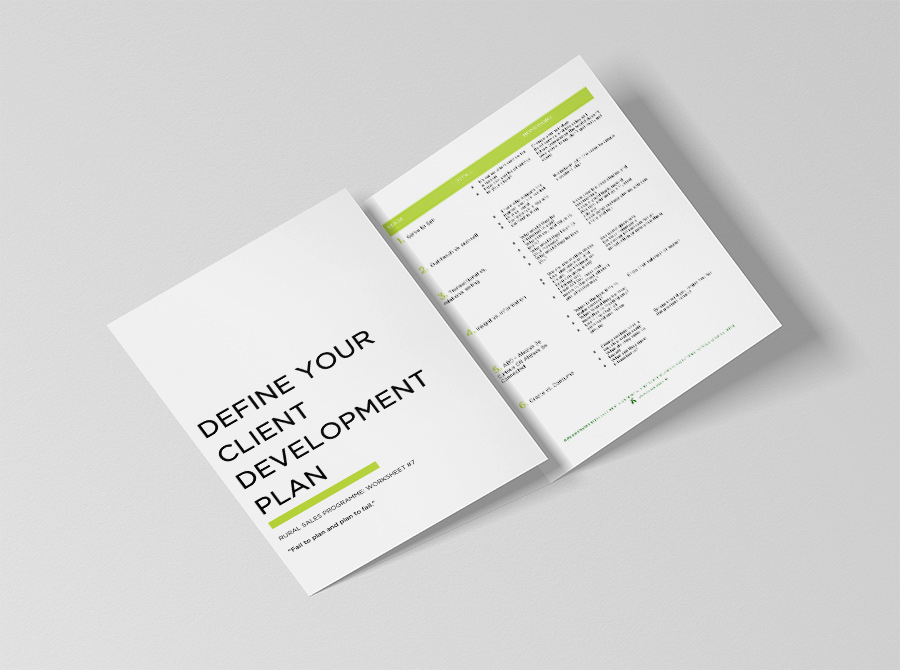Why Content Marketers Must Forget Technology & Focus On Psychology
Every business I meet is struggling with content yet sweating the technology channels it uses. It’s frustrating to watch because they are focussing on the wrong thing but there is a simple solution:
THE BIGGEST FACTOR HOLDING YOU BACK IN CREATING EFFECTIVE CONTENT THAT CONNECTS WITH YOUR CUSTOMERS IS YOUR LACK OF UNDERSTANDING BASIC HUMAN PSYCHOLOGY.
If you don’t invest your time understanding why humans do what they do, your content will continue to get ignored which will only deplete the finite resources you have of time, money and energy.
You can focus on the technology channels you use to promote your content but this will be irrelevant if no one’s listening. Channel choice will count for nothing if no one reads it. So stop wasting your time on the wrong area and start reading this article to help you instead.
Over the past year, I’ve made it my mission to better understand human motivation and emotions so I can help more rural-based businesses be successful in their sales, marketing and content communications. I’ve read intensely across many books and studies and this post shares my learnings with you.
+++
I know creating consistent content is hard (I’m at 44 blogs and counting). It takes time and energy to create content. You have to research your topic and back up your argument. You have to silence the inner critic and start writing. You worry about the haters. You have to be consistent and you have to disciplined.
It ain’t easy. That’s why so many start and fail and so few do it well.
So what can we do to make content creation easier?
Let’s start off with a fundamental question:
WHY DO YOU BUY?
It is a scientifically proven fact that as humans we buy subconsciously 90% of the time. 50% of purchases are made instantaneously like when we grab the same brand of coffee or washing powder at the supermarket. We don’t give them a moment’s thought. They are ingrained in our psyche and are an automated habit and we do it unconsciously without even knowing we’re doing it.
Many of you may refute this fact but I’m here to tell you are soooo wrong.
The world’s largest brain scanning project put to heed to that. None of us tries to lie but the fact is our unconscious minds are much better at making sense of our behaviours than our conscious minds are.
George Loewenstein, a behavioural economist from Carnegie Mellon University reminds us:
“Most of the brain is dominated by automatic process., rather than deliberate thinking. A lot of what happens in the brain is emotional, not cognitive.”
Martin Lindstrom in his brilliant book Buyology conducted the world’s largest neuromarketing study involving an $7m investment across 2000 volunteers using SST (steady state typography) and MRI scanners to accurately work out why people buy.
“If marketers want the naked truth, the truth unplugged and uncensored about what causes us to buy, we have to interview their brains.”
And so he and his fellow scientists did. This amazing study can finally put to the rest the BS filters we tell ourselves and other when it comes to justifying the buying decisions we make.
Why we say we buy often masks a deeper, psychological driver. We’re not trying to mislead , it’s just that our consciousness don’t always recognise the real reasons why. The real reasons are conspicuous fitness signals, as Lindstrom argues, that we use to communicate our value and worth to others. Just like peacocks do.
None of us would say in market research group: “Yeah I bought that Ford350 ute because I wanted to show how masculine and gene worthy I am plus it shows I can afford the 10miles per gallon fuel consumption.”
Neither would any of us say: “ I bought these Jimmy Choo shoes to show that I am superior to others and can afford a $US500 pair of shoes.”
What people say and what they do are two very different things. There are always deeper, stronger psychological drivers at work so you have to get curious and dig below the surface as to why people buy.
Humans have always searched for content that meets and addresses their specific human needs. Yet despite this psychological-driven fact that is all about survival, we still see so many companies creating content that serves their interests rather than the interests of their customers which is short-sighted and stupid when it comes to forming effective content strategy.
So what are these basic humans needs? Let’s find out.
THE LIST OF THE SIX BASIC HUMAN NEEDS
There are a number of needs we have as humans. The mains ones sit around six so here’s the list (btw I used a bit if help from Tony Robbins in his 2006 TED talk which made the top ten TED talks of all time – I recommend you listen to it with the link below):
THE NEED FOR SIGNIFICANCE
No one I know wants to be insignificant. We all like to feel significant, valued, unique and important. A waiter at the restaurant knows what to say when you order the wine “Great Choice Sir/Madam”. A bloke with a gun pointing at the cashier at your local dairy is significant. Being a traffic policeman is significant (this is why so many of them fail they basic community EQ tests and get put in metal boxes instead). Being a politician is significant as it means you have power. This is why people locally want to be a local councillor because of the deeper power it wields amongst their community peers.
Being significant means you have meaning. It means you matter. That you’re making a difference and that you life or profession stands for something. All of us, deep down want to feel like that. When we don’t, we get depressed and start to criticise ourselves. We can get angry or pissed off at the world because no one’s really taking notice of us. Being ignored hurts, just like it does when you don’t get picked by your peers for school sports.
If you can help your customers feel significant they will help you by buying your product or service.
THE NEED FOR STATUS
If brands didn’t have logos we’d be buggered.
Mercedes Benz has a star. Rolex has a diamond face with a specific band. MBAS and PHDs are a educational exhibition of intelligence. All of these are badges we use to show off and signal to the world our financial or intellectual superiority.
Having status is a MASSIVE driver for human beings. We had hierarchies in cave man times and it’s never stopped. Being able to affordable luxury holiday overseas or European cars demonstrates to other around us of our status. Same for your Air New Zealand Elite badge. It wouldn’t have any value if it wasn’t publicised. Attaching it externally to your hand luggage or suitcase signals to others what a “high flyer” you are which must mean you’re busy and important. Air New Zealand, along with other airlines, do a great jab tapping into this psychology by tiered status. They even call it a Status Programme!
How can your brand help customer show they have a higher status?
THE NEED FOR SEX (OR MORE SPECIFICALLY GENE REPRODUCTION)
Geoffrey Miller is his brilliant book Spent talks about how we humans send conspicuous fitness signals to others to let others know our genes are worthy of production. We are a good match and a good mate. Like peacocks and their feathers or lions and their manes we like to signal our reproductive qualities to attract a good mate. As cave men, if we didn’t pas son our genes our family line would die.
THE NEED FOR CERTAINTY
Humans love control. Control gives us comfort in an increasingly uncertain world. That’s why many successful brands use rituals (also known as habits) like Guinness being poured and left for 10 seconds before it settles (“good thing take time”) Or that Stella Artois that has to be served in a particular brand of glass with a knife to clean the top of the froth off or that Corona you bought at the beach with a piece of lime in it (please excuse my beer theme here 🙂
Rituals are reassuring.
What rituals could you associate with your brand to make your customers feel more in control?
THE NEED FOR UNCERTAINTY
We also like novelty and surprises or life can get pretty dull and grey. Variety is the spice of life as they say.
We like surprises that exceed or anticipate our needs like when a vendor sends you a gift you mentioned months ago. It showed them they listened, remembered and thought of you. Rollercoasters are uncertain as you don’t quite know how the ride will go.
A partner who surprises you with a holiday or present you weren’t expecting creates an impact, in a good way.
What ways you can surprise and delight your customers? How can you go the extra mile?
THE NEED FOR GROWTH
This is my personal favourite. If you’re not growing, you’re dying. You’ll get left behind by those who are growing more intelligently than you are.
It’s ironic we leave school or University and then never invest much more in our learning. If you didn’t graduate from school, studies prove those who did and went onto University will earn 6 x as much as you.
This is why I have love life-long learning.
If you can help your customers grow then they will reciprocate by helping you grow too. Conversely, if you want to grow at the expense of your customer’s growth, that’s a short game and good luck with that.
Emotion = Motivation
Have you ever stopped to notice how similar those two words are? They share many of the same letters.
Emotion fuels motivation. We make decisions emotionally and justify rationally. Think about the house you bought. The location was important, so was the price but the feel of the place and its potential was even more so. It just felt right.
When people talk, they often verbalise their instinct: “I just felt right” or “it just didn’t feel right”. We suppress our instincts too much and our gut, claim some scientists, is our second brain.
Great business leaders claim to run they businesses by their gut instinct and there’s some truth to that based on the fact there are more neurons in our stomach than our brains.
As they say:
If it doesn’t feel right, it probably ain’t right.
Be more mindful
I don’t mean this in a pop psychology way. I mean if you want your content to connect, you need to get inside your customer’s mind. You need to develop a mindset that works out what they’re thinking and feeling. You need to tap into what motivates them at a deeper, emotional level if you want to succeed.
Fortunately we don’t all have to go out and buy a MRI machine at $4,000,000 a pop. We already have a ton of research available to us that we can use. Use it to help your efforts, rather than hinder them. Read the books and research studies. Develop a learning mindset to identify the right emotions in yourself and others.
When it comes to emotions, there are literally hundred. For the purpose of simplicity, the three main emotions in your customer’s mind will always be:
– Significance
– Status
– Survival
You need to make sure your content appeals to at least one of these emotional drivers.
Be Pragmatic, Not Academic
Be a pragmatic psychologist. Understand why people buy. Understand what motivates them most. Be curious for the cues and signals they send.
I can promise you will be well rewarded for your efforts if you do all of these things.
Good luck. I look forward to hearing how you get on.
+++
ps: I hope this was useful and valuable content for you. If it was, please help by Sharing this article amongst your network so they can get the same value.
My mission is to champion life-long learning among rural business owners using education-based sales and marketing content that teaches them and their teams how to remain relevant and be more productive and profitable.





